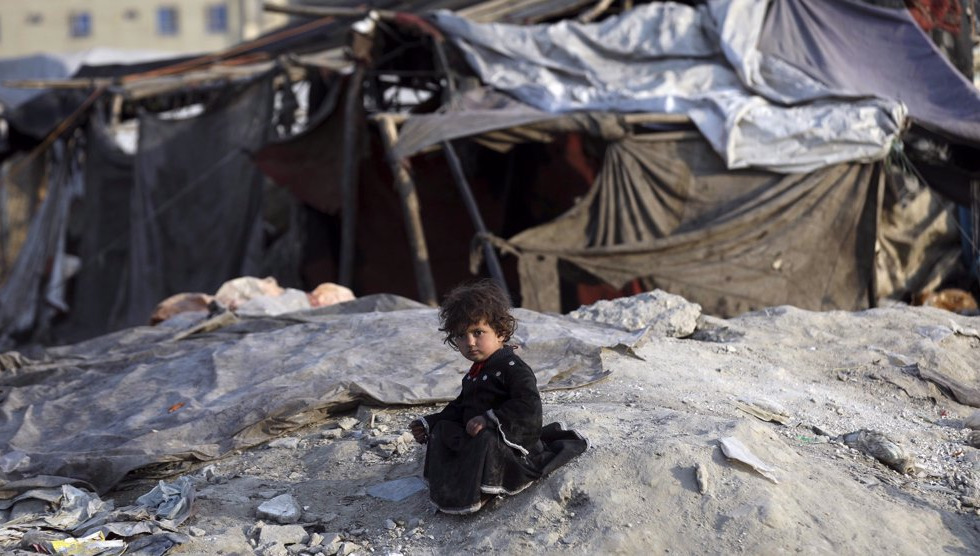
A displaced Afghan child is pictured outside her temporary home in Kabul. (AP file photo)
Kabul, May 13 (RHC)-- Almost half of the population in Afghanistan is battling acute hunger amid lingering drought and deep economic crisis in the war-ravaged South Asian country, according to global humanitarian agencies.
An analysis conducted by UN-backed humanitarians in January and February found nearly 20 million people facing starvation in the country.
The analysis conducted by agencies, including the UN Food and Agriculture Organization (FAO), its sister agency the World Food Program (WFP), and many non-governmental organizations, said hunger persists at unprecedented levels in the country.
“Humanitarian assistance remains desperately important, as does the need to rebuild shattered agricultural livelihoods and re-connect farmers and rural communities to struggling rural and urban markets across the country. Unless these happen, there will be no way out of this crisis,” said Richard Trenchard, FAO representative in the country. He described the food security situation in the country as dire.
The report also raised concern that a small pocket of “catastrophic” levels of food insecurity – IPC 5, the highest phase on the scale – has been detected, marking a first since the scale was introduced in Afghanistan in 2011.
More than 20,000 people in Ghor province, located in the northeast, are facing catastrophic levels of hunger resulting from a long period of harsh winter and disastrous agricultural conditions.
The report said the upcoming harvest will bring some relief for millions of people, but that relief will only be short-term for many.
The FAO said it will assist more than nine million people this year through a range of interventions that include support for crop, livestock and vegetable production; cash transfers, and the rehabilitation of vital irrigation infrastructure and systems.
Meanwhile, Save the Children, a UK-based agency, said nearly 10 million children were going hungry every day in Afghanistan. In a report published this week, the NGO called for “immediate food assistance” to save lives in the short term, but it added that aid alone was “not enough to tackle the country’s worst hunger crisis on record.” At least 20,000 people were pushed into famine, from March to May alone, according to the report.
The dire situation in Afghanistan, which particularly impacts its children, unfolded after the US-led allies pulled out of the country in August last year, paving the way for the Taliban's dramatic comeback. Almost nine months since the U.S.-led international coalition beat a hasty retreat from Afghanistan and announced a freeze on its assets, the country is grappling with a major humanitarian crisis. According to aid agencies and human rights watchdogs, children are the worst affected.
Save the Children had earlier warned that more than half of children under five may suffer from acute malnutrition amidst harsh winter. The country has about $9 billion in assets overseas, including the $7 billion frozen in the United States.
The Taliban government has repeatedly called for the release of the frozen assets, but Washington has continued to rebuff the calls. The UN has previously warned that without financial aid or humanitarian relief, Afghanistan will be on a “countdown to catastrophe.”

